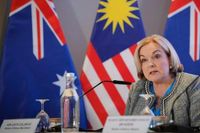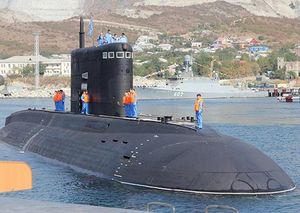On August 21, 2025, the New Zealand government unveiled a sweeping modernization plan for its aging air and naval fleets, marking a significant investment in the nation’s defense capabilities. The announcement, made by Defence Minister Judith Collins, detailed the selection of the Lockheed Martin MH-60R Seahawk helicopters and Airbus A321XLR aircraft as the country’s next-generation naval helicopter and transport platforms. This move, costing a projected 2.7 billion New Zealand dollars (about 1.57 billion USD), signals New Zealand’s intent to strengthen both its military readiness and its interoperability with close allies.
According to the New Zealand Defence Force, the acquisition includes five MH-60R helicopters and two Airbus A321XLR aircraft. The helicopters will be acquired under the US Foreign Military Sales (FMS) program, bypassing a traditional competitive tender process. As Collins explained, “These five Seahawks will increase the offensive and defensive capability and surveillance range of Royal New Zealand Navy’s frigates and ensure we are interoperable with our ally Australia and other partner defence forces.” This interoperability is no small thing: Australia has operated the MH-60R since 2014, and the platform is widely regarded as a linchpin in regional maritime security operations.
The decision to select the MH-60R was not made lightly. A request for information had been issued in April 2023, with several contenders—including the NH90 in NATO Frigate Helicopter configuration and the Leonardo AW159—considered before New Zealand opted to proceed directly with the US offer. The final business case will go before New Zealand’s cabinet in 2026, but the government is moving “at pace to get the process under way,” Collins said, as quoted by Asian Military Review.
The MH-60R Seahawk is no stranger to demanding missions. As the US Navy’s primary shipboard anti-submarine and surface warfare helicopter, it comes equipped with Mk 54 torpedoes, Hellfire missiles, and potentially APKWS rockets. Its versatility and proven track record—over 350 delivered worldwide, with more than one million flight hours logged—made it a compelling choice for New Zealand. A Lockheed Martin Sikorsky spokesperson told Asian Military Review, “As the most advanced and capable multi-mission helicopter with unparalleled capability, proven reliability and sustained performance, the MH-60R is the ideal choice to meet New Zealand’s requirements, while also enhancing operational and interoperability with the US and other allied nations.”
The new helicopters will replace eight Kaman SH-2G Super Seasprite helicopters, which New Zealand acquired from Australia in 2013 after their neighbor decided to retire the fleet. For a decade, No. 6 Squadron has kept the Seasprites flying, but their age and limited capabilities have become increasingly apparent. Like their predecessors, the RNZAF will maintain the new Seahawks, while Royal New Zealand Navy crews will operate them.
Looking at the bigger picture, the MH-60R acquisition is just one piece of a broader modernization puzzle. The Defence Capability Plan, released in April 2025 and followed by a defense budget in May, promises greatly increased investment in the coming four years. In addition to the helicopters and transport aircraft, New Zealand has also flagged the acquisition of a new anti-ship missile capability and a new frigate, as part of its ongoing effort to keep pace with evolving security challenges in the region.
Turning to the skies, the two Airbus A321XLR aircraft will replace the Royal New Zealand Air Force’s (RNZAF) two aging Boeing 757s, which have served No. 40 Squadron since 2008. The 757s, now over three decades old, have been reliable workhorses but are increasingly prone to breakdowns—sometimes at inopportune moments, such as when ferrying political leaders abroad. The A321XLRs will be acquired through a six-year lease-to-buy arrangement, with a total capital cost of 620 million New Zealand dollars and an additional 80.86 million in operating costs over four years.
One of the most critical requirements for the new transport aircraft was the ability to safely fly to and from Antarctica—a mission the current 757s and C-130J-30 Super Hercules have performed for years. The A321XLR, with its extended range of 8,700 kilometers, can now make the trip and return safely if weather conditions prevent landing. Collins highlighted this advantage, noting, “New Zealand needs reliable aircraft to deploy our personnel, deliver military equipment and humanitarian aid, support the evacuation of civilians, and transport government trade and diplomatic delegations quickly, over long distances, and often at short notice.”
The A321XLRs will have a standard commercial configuration, able to carry 122 passengers and up to 9,100 kilograms of cargo. With Air New Zealand already operating a fleet of A321s, the government expects to achieve maintenance and logistical efficiencies. The new planes are anticipated to start arriving in early 2028, further modernizing an RNZAF fleet that recently welcomed four P-8A Poseidons and five C-130J-30s.
Foreign Minister Winston Peters put the urgency of these upgrades into stark perspective: “Global tensions are increasing rapidly, and we must invest in our national security to ensure our economic prosperity. The Defence Capability Plan provides the foundation for our uplift in defence spending, and two-yearly reviews of the plan will allow us to adapt to an ever-changing security environment.”
For New Zealand, the stakes are clear. The country’s geographic isolation means that reliable, long-range air and maritime assets are not just luxuries—they’re necessities. The ability to deploy personnel and equipment across the Pacific, respond to natural disasters, or participate in coalition operations with partners like Australia and the United States is central to the nation’s security strategy. And, as recent breakdowns of the 757s have shown, aging equipment can quickly become a liability.
The process of acquiring the MH-60R helicopters and A321XLR aircraft will take time. New Zealand will join a long queue for the helicopters, as more than 60 MH-60Rs are currently on order or in production for countries like India, Greece, South Korea, Australia, Spain, and Norway. Still, officials are confident that the investment will pay dividends in terms of operational flexibility, reliability, and regional influence.
As the Defence Capability Plan unfolds, New Zealand is positioning itself for a more uncertain world. The combination of modern helicopters, advanced transport aircraft, and new maritime strike capabilities will give the country a defense posture that belies its size. In the words of Collins, “The MH-60R Seahawk is a great aircraft for what New Zealand needs, and fulfills our objective of having a more integrated Anzac force, and the new planes will give us reliable aircraft to deploy personnel and respond to international events.”
With the ink barely dry on the announcement, New Zealand is already looking to the future—one where its defense forces are equipped not just for today’s missions, but for whatever challenges tomorrow may bring.




